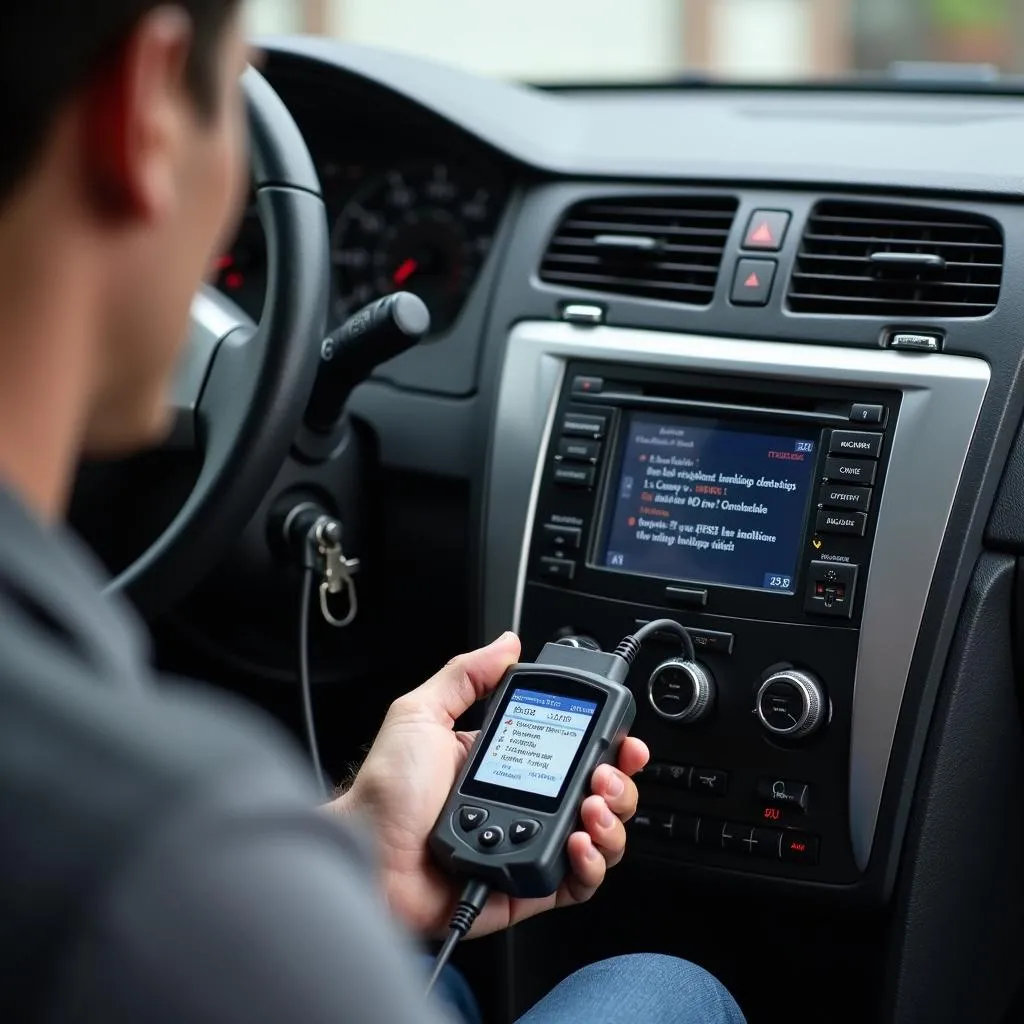The brake system warning light on your dashboard is a crucial safety feature that shouldn’t be ignored. Seeing it illuminated means your car is trying to tell you something important about your braking system.
This article delves into the various reasons why your brake system warning light might be on, what it could mean, and how to address the issue. We’ll cover everything from simple fixes to more complex problems that require professional attention.
Understanding Your Brake Warning Light
Your car’s brake system warning light is designed to alert you of potential issues with your brakes. When you see this light, it doesn’t necessarily mean your brakes have failed completely. However, it does indicate that something requires attention. Ignoring the warning light could lead to more severe problems, putting your safety at risk.
Common Reasons Your Brake System Warning Light is On
Several factors can trigger your brake system warning light. Here are some of the most common culprits:
1. Low Brake Fluid Level
One of the most frequent reasons for the brake warning light is a low brake fluid level. Brake fluid is essential for transferring the force you apply to the brake pedal to the wheels, enabling your car to stop. If the fluid level drops below a certain point, it can trigger the warning light.
What to do: Check your brake fluid level. Locate the brake fluid reservoir under the hood, usually a translucent container with a minimum and maximum marking. If the fluid level is low, add the correct type of brake fluid as recommended by your car’s manufacturer.
2. Worn Brake Pads
Brake pads are designed to wear down over time. When they become too thin, they can trigger the brake system warning light.
What to do: If you suspect your brake pads are worn, it’s crucial to have them inspected by a mechanic. Worn brake pads significantly reduce braking efficiency and can lead to costly damage to your brake rotors.
3. Malfunctioning ABS System
Modern cars come equipped with an Anti-lock Braking System (ABS). This system prevents the wheels from locking up during hard braking, enhancing vehicle control. If the ABS system malfunctions, it can illuminate the brake system warning light.
What to do: Diagnosing an ABS issue often requires specialized equipment. It’s best to take your car to a qualified mechanic or dealership for diagnosis and repair.
4. Faulty Parking Brake
Engaging the parking brake activates a separate braking system. If the parking brake is not fully disengaged or there’s a fault in the system, it can trigger the brake warning light.
What to do: Start by ensuring your parking brake is fully released. If the light remains on, there might be a problem with the parking brake switch or a wiring issue, requiring further investigation.
5. Brake System Leak
A leak in the brake lines, hoses, or calipers can cause a drop in brake fluid pressure, triggering the warning light.
What to do: Carefully inspect the area around your car’s wheels and under the vehicle for any signs of brake fluid leaks. If you notice any leaks, it’s crucial to address them immediately. Brake fluid leaks demand immediate attention from a professional.
What to Do When the Brake System Warning Light Comes On
If your brake system warning light illuminates while driving, follow these steps:
- Stay Calm: Don’t panic.
- Reduce Speed: Gradually decrease your speed and find a safe place to pull over.
- Check the Parking Brake: Ensure the parking brake is fully released.
- Inspect for Obvious Issues: Carefully look for any signs of leaks or unusual noises coming from the brakes.
- Contact a Mechanic: If you can’t identify the problem or it persists, don’t attempt to drive further. Contact a qualified mechanic for diagnosis and repair.
Importance of Regular Brake System Maintenance
Regular maintenance is crucial for keeping your braking system in optimal condition and preventing unexpected issues. Here are some maintenance tips:
- Check Brake Fluid Regularly: Check your brake fluid level at least once a month and top it off if needed.
- Inspect Brake Pads: Have your brake pads inspected during routine oil changes or as recommended by your car’s manufacturer.
- Flush Brake Fluid: Brake fluid should be flushed and replaced according to your car’s maintenance schedule.
When to Seek Professional Help
While some brake-related issues can be resolved with simple fixes, others require professional expertise. Here’s when you should seek professional help:
- Brake System Warning Light Stays On: If the warning light remains illuminated despite checking the fluid level and ensuring the parking brake is disengaged, seek professional help.
- Spongy or Soft Brake Pedal: If your brake pedal feels soft, spongy, or goes closer to the floor than usual, it indicates a potential problem with your brake system.
- Grinding or Squealing Noises: Unusual noises when applying the brakes, such as grinding or squealing, suggest worn brake pads or other issues that need addressing.
- Pulling to One Side When Braking: If your car pulls to one side when braking, it could indicate uneven brake pad wear or a problem with the brake calipers.
“Ignoring your brake warning light is like ignoring a flashing ‘danger’ sign,” says John Smith, Senior Automotive Engineer at XYZ Automotives. “It’s always better to be safe than sorry when it comes to your brakes.”
Conclusion
Your car’s brake system warning light is a crucial safety feature designed to alert you of potential problems. Understanding what this light means and how to respond can help you address issues promptly and avoid potentially dangerous situations. Regular maintenance and timely professional attention can keep your braking system in optimal condition, ensuring your safety on the road. Remember, when it comes to brakes, it’s always best to err on the side of caution and seek professional help if you’re unsure about anything.

